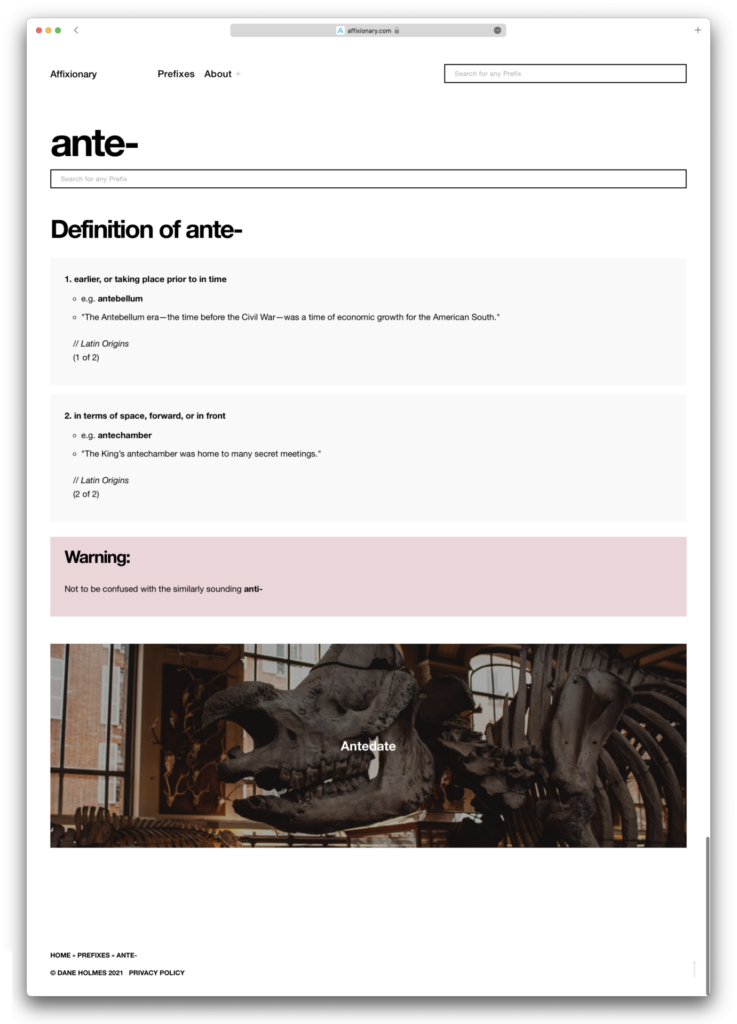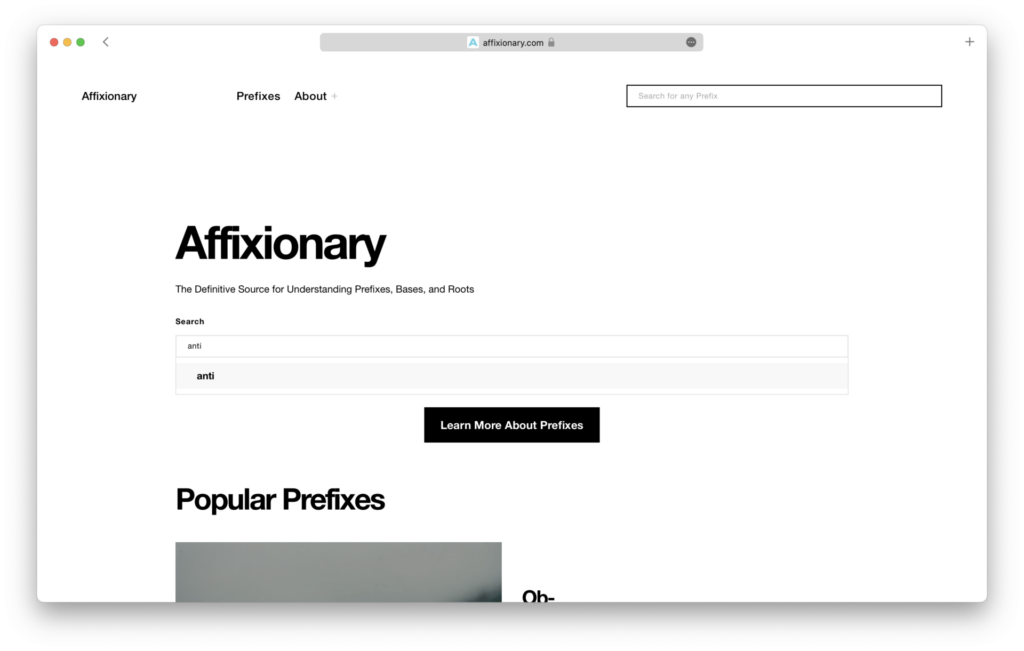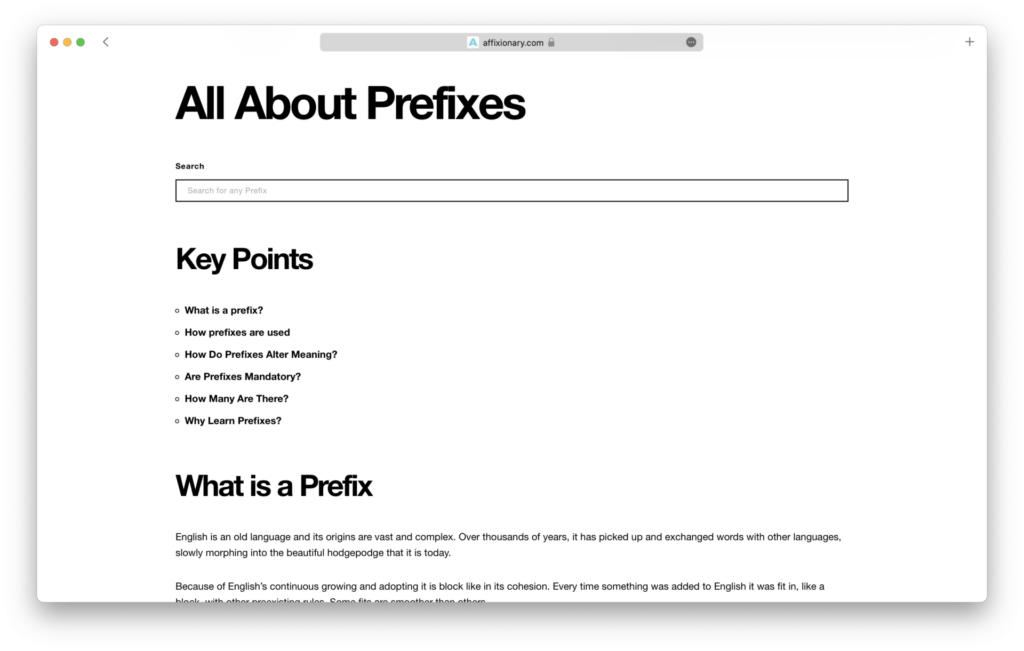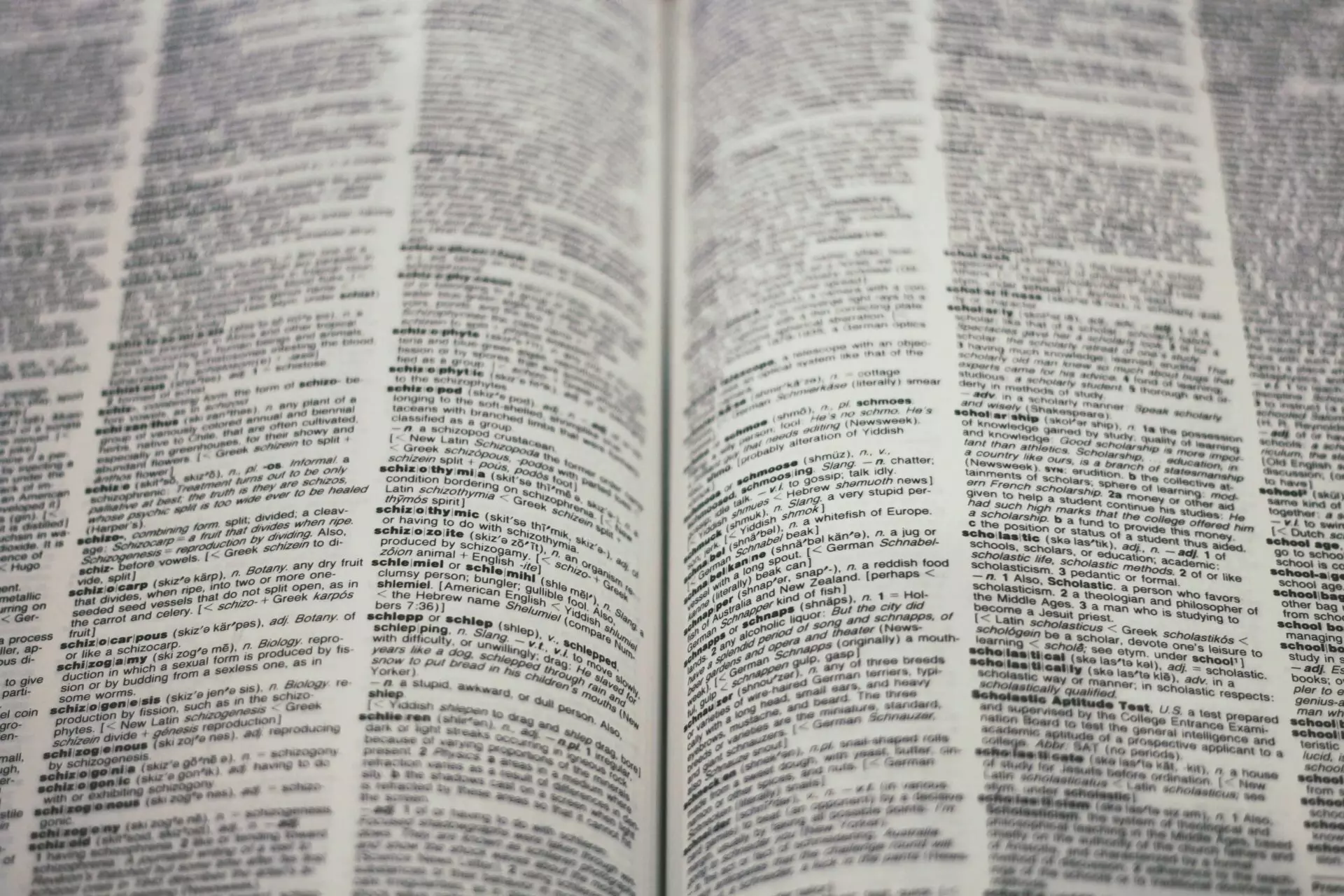Affixionary is probably my biggest project to date, having worked on it on and off since mid-2018. In its current state, it is a complete database of every non-medical and non-scientific prefix in the English language. This totals to 266 unique prefixes!
The idea to create Affixionary came to me while I was still in community college. I remembered how in middle school, every week my teacher gave a bank of common prefixes, suffixes, and bases to learn. We were told to research them and write our definitions for each. However, I found while researching that traditional dictionaries did not have the amount of information for each prefix that I required.
The image below is an example of a typical definition page one might find on Affixionary. Each prefix contains a unique definition researched and written by me. Most prefixes have more than one definition to capture each’s specific nuance. Additionally, each prefix has an example word, example sentence, origin information, helpful tips, and an image that illustrates the essence of the word.

Beyond researching, defining, writing, and finding images for every prefix, affixionary.com was entirely built and designed by me. The webserver runs on a highly optimized openlitespeed server which I manage. The website is built using WordPress and a highly customized theme, coded by me. The definitions and all information pertaining to them are stored in a hand-designed SQL database and the images are saved in a separate S3-compatible bucket. If you have any questions or recommendations about Affixionary’s stack I would love to talk about it.
Because Affixionary is built on a custom database it has intelligent search capabilities. Using any one of the website’s many search fields you can search for any prefix in the database. And, as long as it is not too badly misspelled it should be able to turn up a result.

For more general learning Affixionary can act similar to a traditional, physical dictionary. All you have to do is simply pick a letter and all the prefixes appear in alphabetical order for your explorative learning pleasure.

To further assist in learning about the building blocks of English, Affixionary contains multiple pages explaining the purpose of prefixes, their history, and their general method.

Given the scale of Affixionary and my busy schedule, it is far from complete. Soon I would like to grow beyond prefixes and add definitions for every suffix, affix, and base. Further down the wishlist, I hope to one day move Affixionary off of WordPress, move the database to something more flexible, and open up a public API for my definitions.
Thank you for reading about my biggest for-fun project to date. I hope you enjoy it or find it useful. As always, I would love to hear what you think.

Leave a Reply